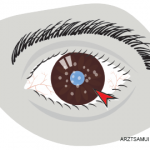“We would treat the children for four to six months before giving up,” Dr. Doycheva says. “In children who are reactivation free for two years, we would start tapering the drug after about two years.”
Dr. Jim Rosenbaum, from Legacy Devers Eye Institute, Portland, Ore., has reported previously on the effects of mycophenolate in ocular inflammation. He told Reuters Health by email, “Although the study shows both safety and efficacy, the experience with mycophenolate sodium in children remains limited. Patients and practitioners should appreciate that a study like this is not designed to exclude rare and potential severe toxicities.”
“In most instances, treatment is continued for years,” Dr. Rosenbaum says. “If both eyes have been completely uninflamed for six to 12 months, I often try to withdraw immunosuppression gradually.”
The authors reported no funding or disclosures.


